Introduction
Beijing Lǔzhǔ, a iconic dish rooted in China’s culinary heritage, is a savory masterpiece that tantalizes taste buds with its rich, aromatic broth and tender, melt-in-your-mouth ingredients. This traditional offal stew, often dubbed the “comfort food of the imperial city,” has evolved from humble street fare to a beloved symbol of Beijing’s gastronomic identity. Comprising a medley of pork intestines, lungs, tofu, and bread soaked in a deeply flavored broth, Lǔzhǔ offers a symphony of textures and umami-packed flavors that satisfy even the most discerning palates. While its appearance might intimidate the uninitiated, mastering the art of preparing this dish unlocks a gateway to understanding the soul of Beijing’s street food culture. This article delves into the history, ingredients, and meticulous process of crafting authentic Lǔzhǔ, ensuring even novice cooks can recreate this culinary treasure at home.
The Origins and Cultural Significance
Lǔzhǔ’s story begins in the Qing Dynasty, where it emerged as a byproduct of butchery, utilizing less prized cuts of meat to feed laborers and working-class communities. The term “Lǔ” refers to the braising technique, while “Zhǔ” denotes the simmering process. Over centuries, it transitioned from a peasant dish to a street food staple, sold in bustling night markets and hole-in-the-wall eateries across Beijing. Today, it remains a rite of passage for visitors and locals alike, embodying the city’s resilience and its ability to transform humble ingredients into gold.
Ingredients: The Foundation of Flavor
Creating exceptional Lǔzhǔ hinges on sourcing high-quality ingredients and balancing their flavors. Below is a comprehensive list of components:
-
Offal and Meats:
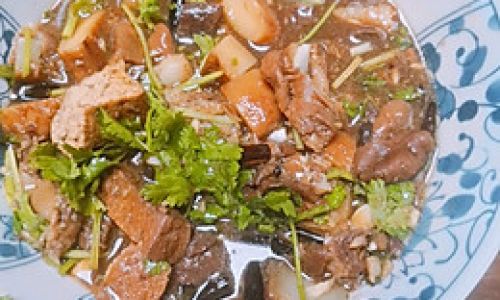
- Pork Intestines (Dà Cháng): The star ingredient, known for their chewy texture and ability to absorb broth.
- Pork Lungs (Fei): Adds a light, airy contrast to the heartier intestines.
- Pork Stomach (Dǎn Pi): Contributes a subtle gaminess and tenderness.
- Optional: Pork ears or tripe for added texture.
-
Aromatics and Spices:
- Soy Sauce (Liàng Jiàng): Use dark soy sauce for color and light soy sauce for saltiness.
- Rock Sugar (Bīng Táng): Balances the broth’s savory notes with a hint of sweetness.
- Spices: Star anise, cinnamon sticks, Sichuan peppercorns, fennel seeds, and bay leaves form the flavor backbone.
- Ginger and Garlic: Freshly minced to eliminate offal odors.
-
Additional Components:
- Fried Tofu (Dòufu Gān): Absorbs broth like a sponge, offering a meaty bite.
- Cong You Bing (Scallion Pancakes) or Baked Bread (Bǔ): Starchy elements to soak up the broth.
- Condiments: Vinegar, minced garlic, chili oil, and coriander for garnish.
Equipment Essentials
A heavy-bottomed stockpot (at least 8 quarts) ensures even heat distribution, critical for slow-simmering. You’ll also need a colander for rinsing offal, a sharp knife for precision cutting, and a ladle for skimming impurities.
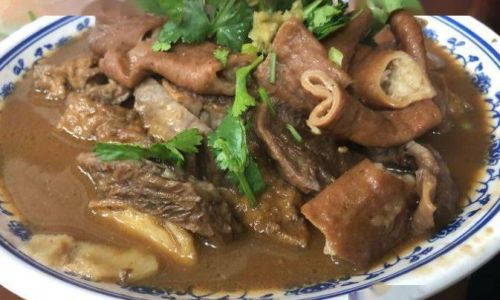
Step-by-Step Preparation
Cleaning and Preparing the Offal
The success of Lǔzhǔ begins with meticulous cleaning:
- Intestines: Rinse under cold water, then scrub inside and out with salt and vinegar to remove impurities. Turn them inside out using a chopstick and repeat the process.
- Lungs: Soak in salted water for 2 hours, then blanch in boiling water for 5 minutes to eliminate blood.
- Stomach: Scrape off excess fat and membranes with a knife, then rinse thoroughly.
Parboiling the Meats
Bring a large pot of water to a boil and add the cleaned offal. Blanch for 10–15 minutes, skimming off foam that rises to the surface. This step removes residual odors and tightens the meat’s texture.

Crafting the Master Broth
In the same pot, add 2 tablespoons of oil and sauté minced ginger and garlic until fragrant. Toss in the spices (star anise, cinnamon, etc.) and toast for 1–2 minutes to release their oils. Return the blanched offal to the pot, along with 4 liters of water, soy sauces, rock sugar, and a splash of rice wine. Simmer gently for 2–3 hours, periodically skimming the surface. The broth should reduce by a third, developing a viscous, amber hue.
Adding the Tofu and Bread
After simmering, introduce fried tofu and chunks of baked bread. Continue cooking for 30 minutes, allowing them to absorb the broth’s essence.
Final Touches and Serving
Adjust seasoning with salt or sugar as needed. Slice the offal into bite-sized pieces and arrange them with tofu and bread in a deep bowl. Ladle the broth generously over the ingredients, ensuring everything is submerged. Garnish with chopped coriander, a drizzle of vinegar, and a dollop of chili oil.
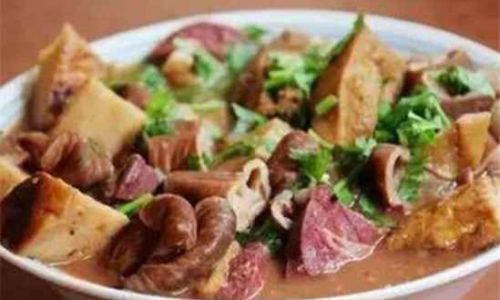
Serving Suggestions
Traditional Lǔzhǔ is often paired with a cold glass of Beijing Yanjing Beer or a pot of jasmine tea to cleanse the palate. For a heartier meal, serve it alongside pickled vegetables or a plate of fresh cucumbers.
Common Pitfalls and How to Avoid Them
- Gamey Aftertaste: Overcooking offal can amplify unwanted flavors. Stick to the recommended simmering times and ensure thorough cleaning.
- Greasy Broth: Skim impurities diligently during cooking and avoid adding excess fat.
- Mushy Tofu: Add fried tofu during the final 30 minutes to prevent sogginess.
Cultural Etiquette and Variations
In Beijing, Lǔzhǔ vendors often customize bowls based on customer preferences. Some request extra intestines, while others prefer a balance of all components. Regional variations exist too: Tianjin’s version might include more vinegar, while Shanghai’s leans sweeter.
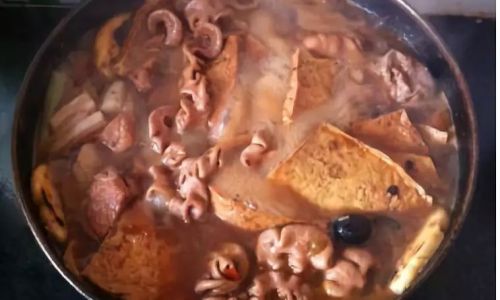
The Science Behind the Flavors
The magic of Lǔzhǔ lies in the Maillard reaction during spice toasting and the slow breakdown of collagen in the offal, which thickens the broth. The interplay of umami (from soy sauce), sweetness (rock sugar), and pungency (garlic) creates a harmonious complexity.
Conclusion
Beijing Lǔzhǔ is more than a dish—it’s a testament to resourcefulness, patience, and the joy of sharing a meal. While its ingredients may seem unconventional, the result is a culinary triumph that bridges tradition and innovation. Whether you’re a seasoned chef or a curious foodie, mastering this recipe invites you to savor the heart and soul of Beijing, one spoonful at a time. So, roll up your sleeves, gather your ingredients, and embark on a journey to recreate this timeless classic. Your taste buds—and your Instagram followers—will thank you.
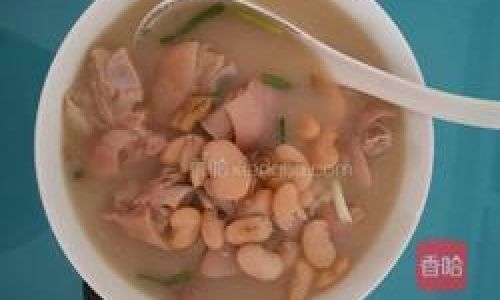
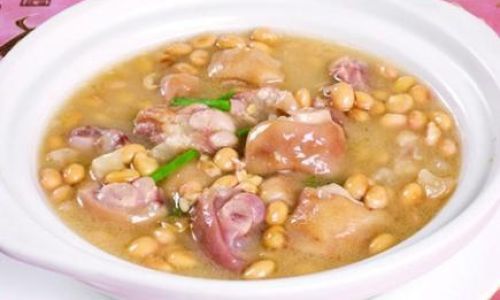

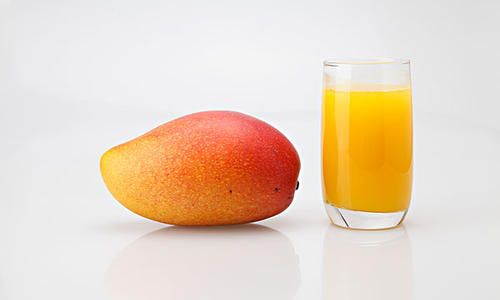

0 comments